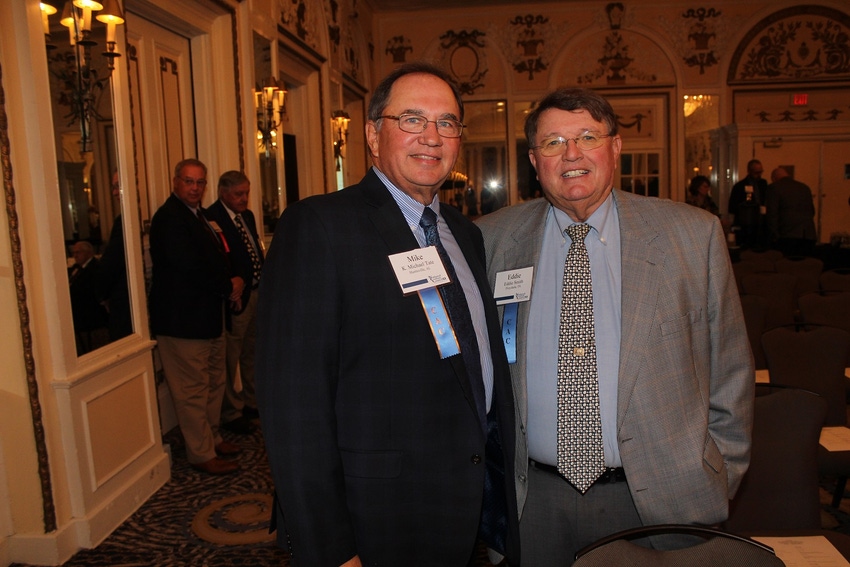
Addressing the board of directors and guests at the recent National Cotton Council (NCC) Mid-Year meeting at the Peabody Hotel in Memphis, Tenn., Mike Tate, NCC chairman and a cotton producer from Huntsville, Ala., highlighted several key issues in which the NCC has been involved.
“I want to commend Reese Langley, vice president, Washington Operations, and Gary Adams, president and CEO, NCC, for their advocacy efforts that helped lead to USDA’s recently-announced second Market Facilitation Program (MFP), that should provide cotton producers with some timely economic assistance,” said Tate. “Farmers who produce cotton and several other crops may sign up for the latest MFP payment at their local Farm Service Agency (FSA) office through December 6, of this year.”
FSA will start making the first payments in late August or early September. “Two other payments may be made in November and January 2020 if market conditions and trade opportunities dictate,” Tate added.
USDA has initiated efforts to implement the 2018 farm bill that contains many of the NCC’s policy priorities. “We anticipate they will roll out the ARC/PLC election that applies to the 2019 and 2020 crops, as well as enrollment for the 2019 crop,” Tate said. “Our staff is designing a plan to most effectively and efficiently educate the largest number of our members through technologies that include educational webinars. We hope to begin these in September.”
With the increased frequency of disasters, the NCC has made it a priority to work with the appropriate agencies to obtain economic assistance for producers. “Congress passed a long-awaited and much needed disaster and recovery assistance bill that will directly benefit those who were devasted by hurricanes Florence, Michael, and other natural disasters throughout 2018 and early 2019,” Tate said. “Now that the President has signed the bill, USDA has begun implementing the legislation.”
NCC has developed a communications plan to coordinate training efforts with electronic warehouse receipt provider, EWR, Inc., to implement new reporting requirements for cotton warehouses that will hopefully improve the speed at which U.S. raw cotton is delivered to customers across the globe.
Contamination, USMCA and the trade dispute
At the NCC’s 2019 annual meeting, Chairman Tate appointed a multi-segment Lint Contamination Subcommittee of the NCC’s Quality Task Force (QTF) to address issues and report findings of contamination incidences being forwarded through the QTF. “We need ongoing assessments of contamination in bales with a 71/72 call, as well as options regarding the classing/reclassing of those bales,” Tate said. “Market discounts for bales with a 71/72 call have increased at an alarming rate.”
The NCC is a member of the Pass United States-Mexico-Canada Agreement (USMCA) coalition and recently sent letters to all members of Congress and 60 other ag groups to increase congressional support of this agreement. “During their recent negotiations, the current administration was successful in removing the U.S. Section 232 tariffs and the corresponding retaliatory tariffs,” Tate said. “While cotton and cotton textiles have not been subject to these tariffs in these key markets, this action creates a pathway for Congressional approval of the USMCA this year.”
Tate traveled to China this past June, participated in Cotton Council International’s Cotton Days, and attended the International Cotton Conference hosted by the China Cotton Association (CCA). “China’s textile mills want and need U.S. cotton. The ongoing trade dispute was the most talked about issue on this trip,” Tate said. “Although the current 25 percent retaliatory tariffs make U.S. cotton an unworkable option, the tariffs are having a significant impact on the Chinese textile industry.”
Chinese mills are unable to make long-term business plans; there is an oversupply of yarn, which is leading to pressure in the supply chain, and textile capacity is transferring to other countries. “The most alarming thing our group heard was that in some cases, the lack of access to U.S. cotton is causing the Chinese mills to work more manmade fibers into their blends,” Tate said.
Because sourcing U.S. cotton is largely prohibitive in China, many mills are now also seeking alternative cotton suppliers in Brazil, India, and Australia. “If we lose these markets in China, we will have to work extremely hard to recapture them.”
Tate reinforced to everyone that the U.S. cotton industry has an excellent relationship with the CCA and the China National Textile and Apparel Council. “We believe these relationships will be beneficial to us once this trade dispute is resolved,” he said. “We are also encouraged that the CCA has filed a request for U.S. cotton to be exempt from the tariffs. The NCC has submitted supporting documents with that request, but we’re not sure when the Chinese government will review that request or make a decision.”
About the Author(s)
You May Also Like




